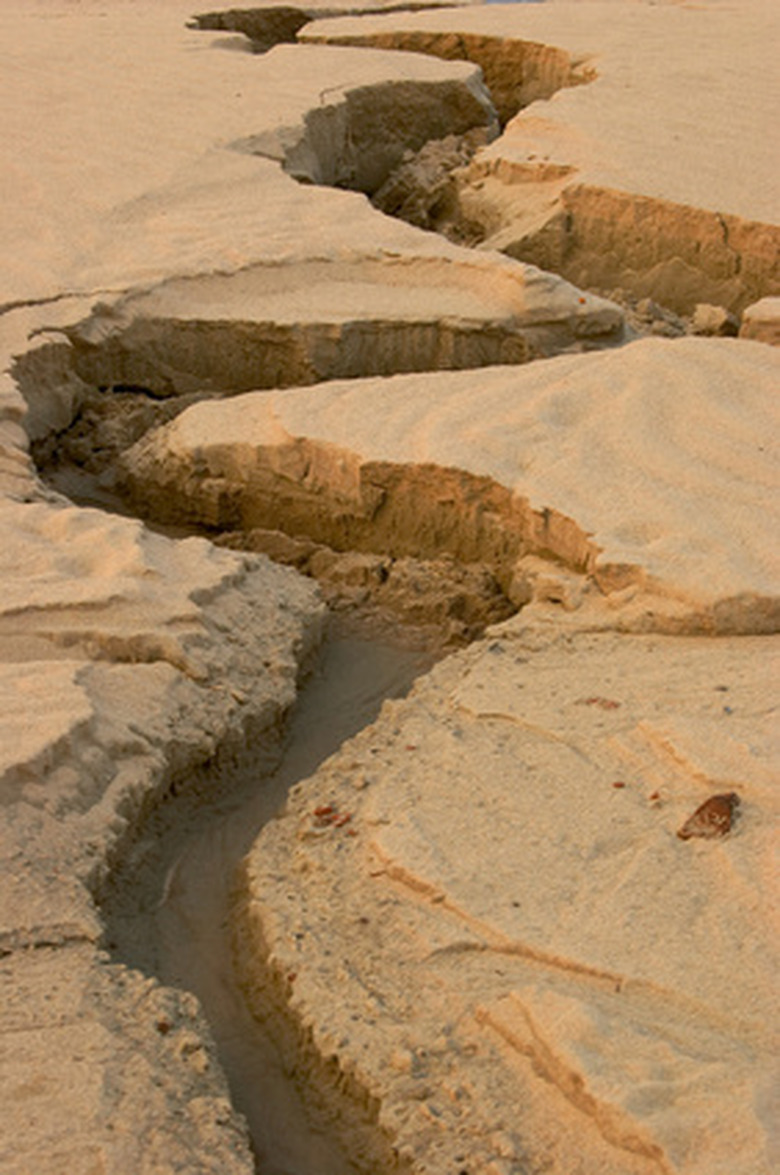Types Of Stone To Control Erosion
Erosion is the washing away of vital soil and other ground materials in rain or tidal movements. Several different factors can cause erosion, including the removal of surrounding plant life. The effects are the draining away of valuable nutrients from gradient areas, making it difficult for plants to grow, and the eating away of banks and hills. Engineers use several methods to combat erosion and either stop or reverse it. They often use different types of stone as part of these methods. While no single variety of stone (such as granite or limestone) is notably more effective at preventing erosion than another, engineers often choose particular sizes and sources of stone.
Cobblestones
Cobblestones
Cobblestones are rounding stones often found by riverbeds and in similar areas. Ordinarily these stones do not help stop erosion, but engineers use them to fill devices called gabions. These are cylindrical, mesh-like objects that are filled with the stones and then placed in walls, steps or along banks to prevent soil erosion. The rocks provide the necessary bulk and strength for the gabions.
Gravel
Gravel
Gravel is another common ingredient in erosion prevention measures. Most gravel used for this purpose comes from mines. Mining operations that mine stone such as granite produce a large amount of extra rock. The mine grinds this rock into small stones and sells it as gravel. The gravel is layered on the surface of dams, fences and boards used to prevent erosion. The gravel gives the soil something to catch onto, holding it in the presence of flowing water.
Non-Absorbent Stone
Non-Absorbent Stone
Some minerals are absorbent and easily filter water, while others resist water and let it flow past more easily. Clay is non-absorbent, and soils with a high clay content have a double edge: While they let water flow away more easily and can contribute to erosion, they are also useful to build firm substrates that can support terraces and other anti-erosion projects.
Sand
Sand
Sand is an important filler in a variety of erosion-prevention devices. Along shorelines, engineers place clean filler sand in intertidal zones that suffer from erosion, and then they grow natural grasses on top of the sand to firmly embed it. Sand is also a primary ingredient in mulches, a soil material used to line banks and hills to prevent mild erosion problems.
Cite This Article
MLA
Lacoma, Tyler. "Types Of Stone To Control Erosion" sciencing.com, https://www.sciencing.com/types-stone-control-erosion-6858524/. 24 April 2017.
APA
Lacoma, Tyler. (2017, April 24). Types Of Stone To Control Erosion. sciencing.com. Retrieved from https://www.sciencing.com/types-stone-control-erosion-6858524/
Chicago
Lacoma, Tyler. Types Of Stone To Control Erosion last modified March 24, 2022. https://www.sciencing.com/types-stone-control-erosion-6858524/
